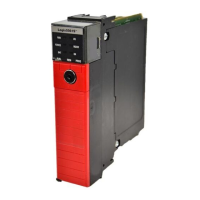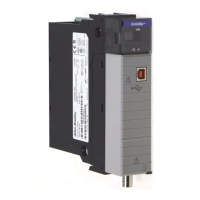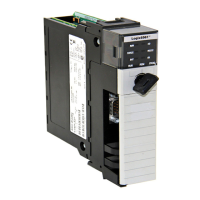Geometries with orientation support
Rockwell Automation Publication MOTION-UM002F-EN-P - February 2018 205
Rz Turns
Counter of J6
J6
(if zero angle offset = 0
) and
(Rz work Offset = 0
)
J6
(if zero angle offset = 0
)
and (Rz work offset = 80
)
J6
(if zero angle offset = 90
) and
(work Offset = 0
)
--- --- ---
---
+179.9999 1 180.0001 100.0001 270.0001
+180 1 180 100 270
-179.9999 0 179.9999 99.9999 269.9999
--- --- ---
---
0 0 0 -80 90
--- --- ---
---
+179.9999 0 -179.9999 -259.9999 -89.9999
+180 0 -180 -260 -90
-179.9999 -1 -180.0001 -260.0001 -90.0001
See also
Program example for turns counter on page 205
The following is an example for programming a turns counter.
Configure Cartesian and robot coordinate systems
Refer to configuring Cartesian and robot coordinate systems for details of
configuring the two coordinate systems that are used for the turns counter
application example. The example uses the Delta J1J2J3J4J5 robot system.
In this example, the source Cartesian coordinate system has six virtual axes
X,Y,Z,Rx,Ry,Rz. The robot coordinate system has five real axes (J1,J2,J3,J4,J5).
The example uses the MCTO instruction to establish the bidirectional transform
relationship between these coordinate systems.
The example also contains a Joint Cartesian coordinate system for moving to a
joint coordinate target point to establish initial positions or other joint positions.
The Joint Cartesian systems has six axes (J1,J2,J3,J4,J5,J6). The J6 is a virtual axis,
while the rest are real axes.
Program example for turns
counter

